“Stranger Things” Cinematographer Caleb Heymann on Season 4’s Monstrous Mayhem
*Spoilers below for the first seven episodes of season 4!
The first seven episodes — the last two are expected in July — of Stranger Things Season 4 go big. Hopper (David Harbour) is alive but in a Soviet prison. The kids are split up, with Eleven (Millie Bobby Brown) and Will (Noah Schnapp) living the opposite of a teenage dream out in California. The rest of the gang are still in Hawkins, simultaneously trying to get through high school and the difficulty of daily life literally on top of the Upside Down. It’s a rough time for everyone, and things only get worse when new, minor teenage characters start spontaneously levitating, right before all their bones twist and break and their eyes transform into bloodied pits.
And that’s not even the worst thing. Sam (Paul Reiser) rescues El from juvenile detention (powerless, she thwacks a bully with a roller skate, and no matter your views on teenage violence, the crime does not seem wholly undeserved), but El winds up back in the nightmare facility of her early youth, trapped in her memories, with creepy Papa/Martin (Matthew Modine) running the show. It’s an all-around darker season than the three previous, but as the cast disperses to Russia, California, and Martin’s lab, with a core group in Hawkins hard at work defeating Vecna, an evil Upside Down being whose twisted motivations may reveal why he’s so hellbent on killing local teens, the show establishes distinct palettes for its various locations that make visually jumping from place to place seamless. We had the chance to speak with Caleb Heymann, the season’s cinematographer (he was also on the show’s second unit during Season 3) about using light to capture characters’ rock bottoms, working with the Duffer Brothers’ preference for capturing effects in-camera, and evoking the heightened 1980s nostalgia for which the show is so beloved.
There are so many different settings this season. In terms of lensing and lighting, did you have hard and fast rules to differentiate between them?
I think as far as our lensing goes, that’s a bit more consistency across the locations and across the seasons — the tendency toward using slightly wider focal lengths, seeing more of the space, and having a lot of big camera moves, and camera moves that hinge around space. That being said, we decided to go more handheld this season — all the stuff out at Max’s trailer was handheld inside and outside, which normally would only get used for fight sequences in seasons past. We wanted California to feel warm and sunny but still have pockets of shadows. Whereas at the other end of the spectrum, Russia was going to be very low lit and bleak, with lots of older practical fluorescent units, older tungsten, and sodium—this sort of bluish daylight like you’d get far up north. It’s almost a permanent twilight look. At the complete other end of the spectrum, the Hawkins lab is this fluorescent-lit environment and a little bit more neutral. It was the one place where we didn’t have this strong color contrast, but we knew we wanted to go a little retro and greenish with the fluorescents, then really pocket it so you still had a lot of contrast and mood.
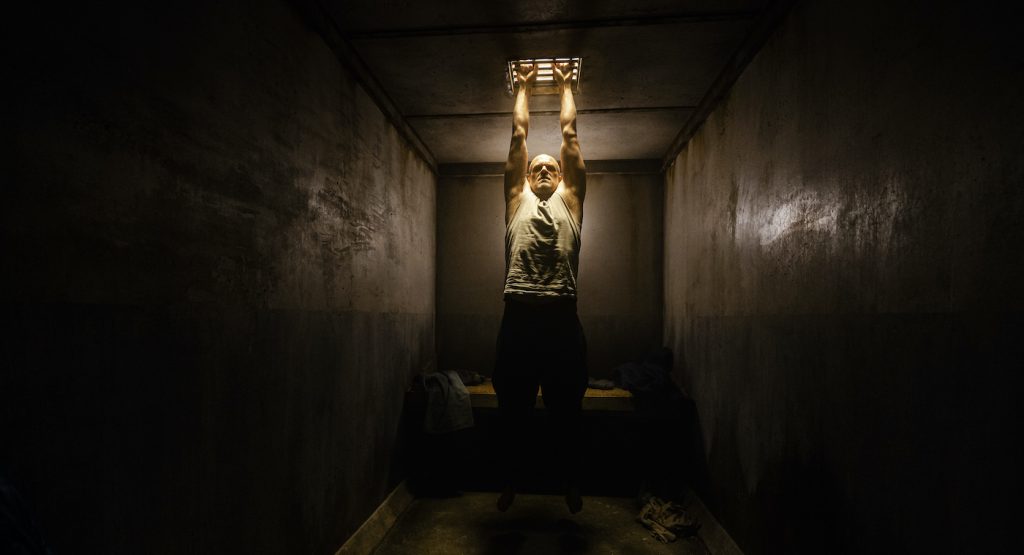
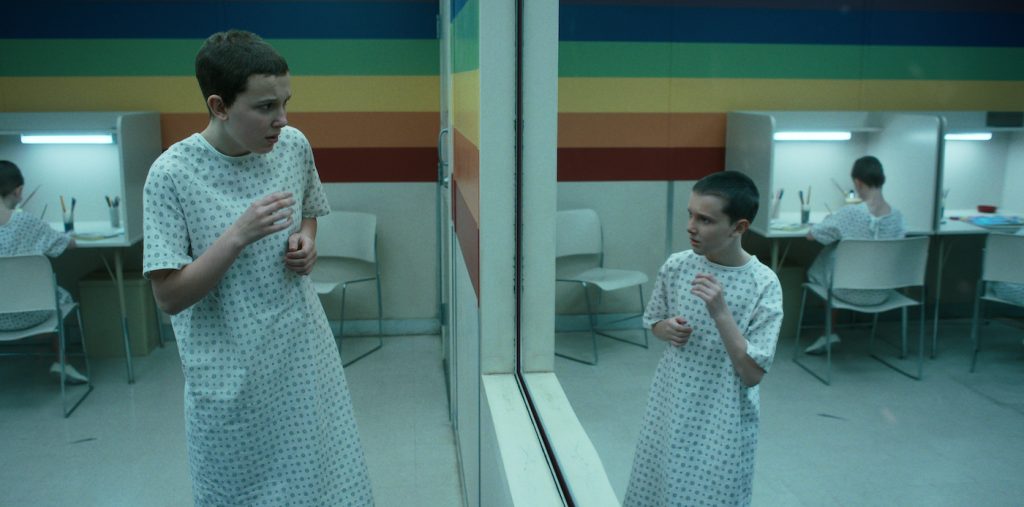
This was all a real contrast to previous seasons, though.
So much happens in Hawkins. But by and large, the season was going to be much darker than Season 3, when it was really about vibrant colors, summertime, and neon light. This time around in Hawkins, post-mall fire and Billy’s death, we wanted to immediately start off with a more somber version that would then only get darker from there. As a cinematographer coming onto a show in the 4th season — I’d done the second unit in Season 3, but this was my first time to come on doing the main unit — it was amazing to be able to be establishing all these new looks, working on mood boards and lookbooks for all these new locations that had never been photographed before. Something we talked about early on with the Duffer Brothers was that we’d have these distinctive palettes that immediately orient you when you’re cutting between so many different storylines. But then at a certain point you also just want to go with the emotional tonality of what’s required for that scene and whatever character you’re most invested in at that point.
Where did emotional tonality lead the way?
Right in episode one, early on, we’ve gone into the pep rally, where it’s a sunnier look, and there’s still that color contrast, but then as we go into the school, it goes a little more silhouette-y. You’ve got Max in her counselor’s office, and they’re framed with a lot of negative space in the frame, in these very imbalanced compositions and really stark profiles, but tight frames that are bringing you into her psychology. Then she has the conversation with Lucas in the hallway, in a school that normally is very bright, with overhead lights all over the place, we really tried to create pockets of darkness that she could walk through. As she goes into the bathroom where it goes really green all of a sudden, that’s motivated by knowing these could be some older fluorescent lights in the bathroom that arguably haven’t been changed out in a while. I really leaned into that. When she starts hearing Chrissy in the stall hallucinating, it’s already this darker sickly greenish lighting, and then it just builds into this flicker. That was all motivated by what Max is going through that point — she’s at rock bottom, and so is Chrissy in the stall next door. It’s all about what they’re experiencing at the time and making it feel uncomfortable and claustrophobic.
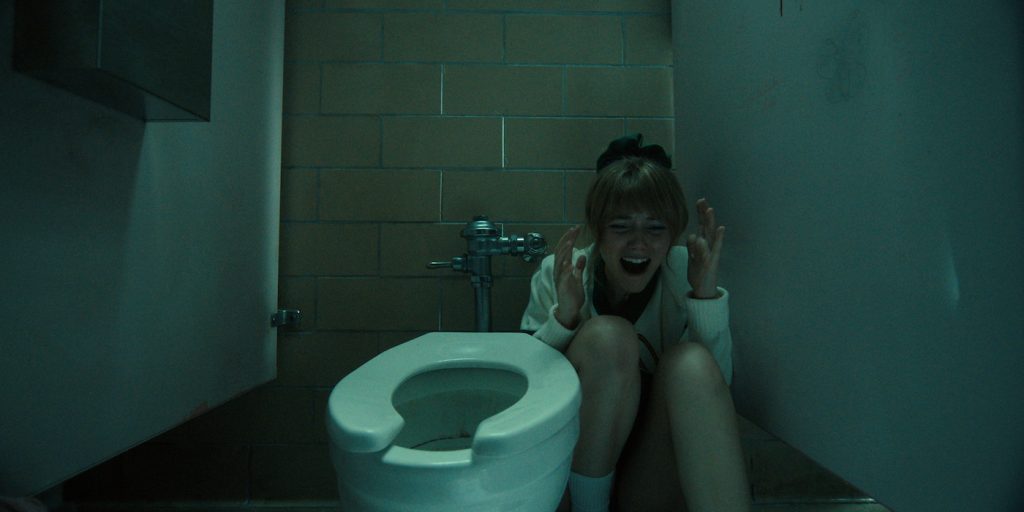
How does balancing what you do with visual effects work?
One of the things I love about working on this show is that there really is a commitment to doing as much as we can in-camera, which does make it really exciting. For instance, in the Upside Down, when we’ve got a five-minute walk and talk scene happening in the woods, that’s all done in-camera, in the sense that we’re shooting in actual woods at night in Atlanta, and the miles and miles of nether, those vines that wrap around everywhere, that all physically has to get created, and then we have to go and light up several hundred yards of forest with occasional red lightning.
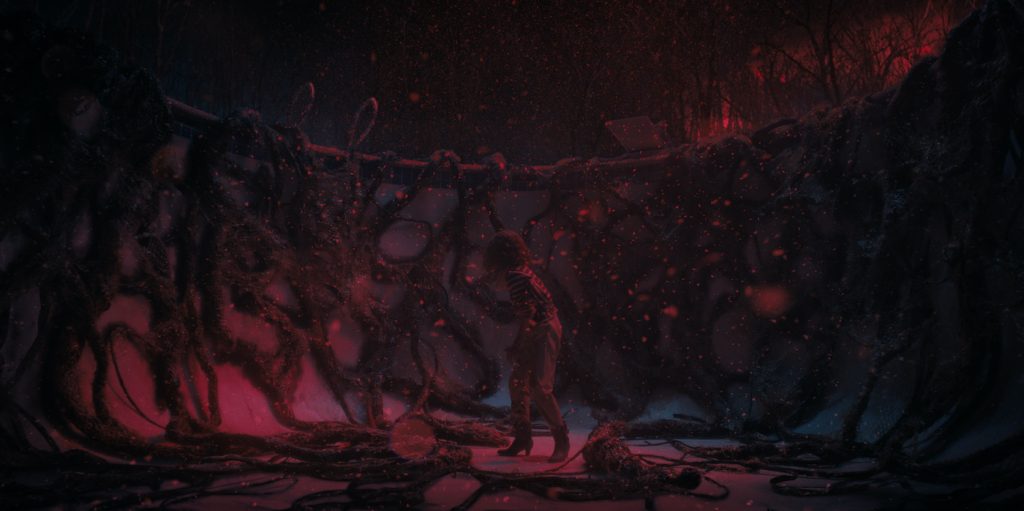
Then you get to the end of the scene and have a big flyaway into a far-off horizon and you see a sky, that’ll all be augmented as visual effects. Even with Vecna, there was actually an actor who went through eight hours of incredibly intricate special effects makeup to become him, which was super scary to look at but gave us something to light. He would actually get suspended there from the set. We’d have a reference for vines but then visual effects would come in and build out the vines that connect him to the post and add spores, but everything else was done in-camera. There’s always a preference for that kind of authenticity you get when the actors are able to play off a monster who’s there, instead of having to play off a tennis ball. When I shot Season 3 second unit stuff, there was obviously no version of the mind flayer. There were lighting stands with tennis balls on them, so you could kind of gauge whatever this 25-foot-high monster was going to be.
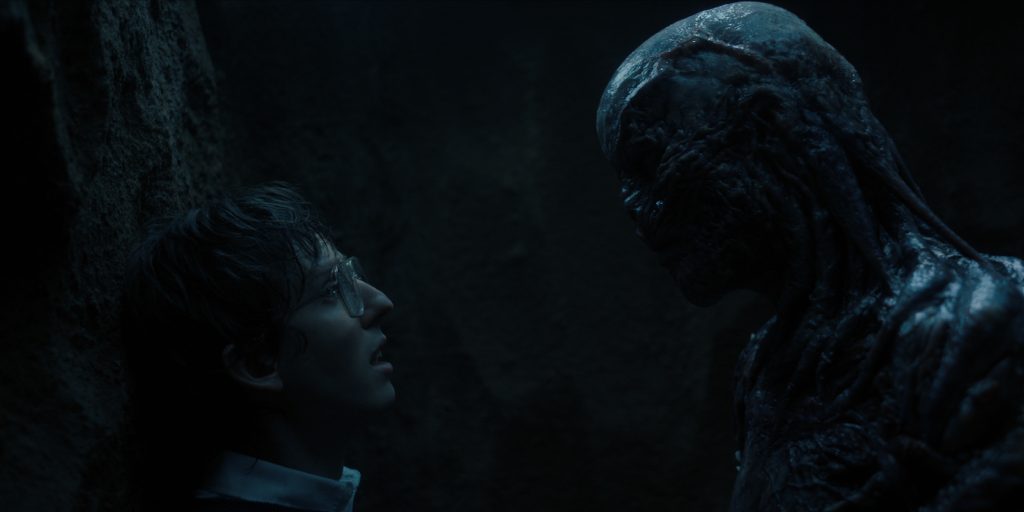
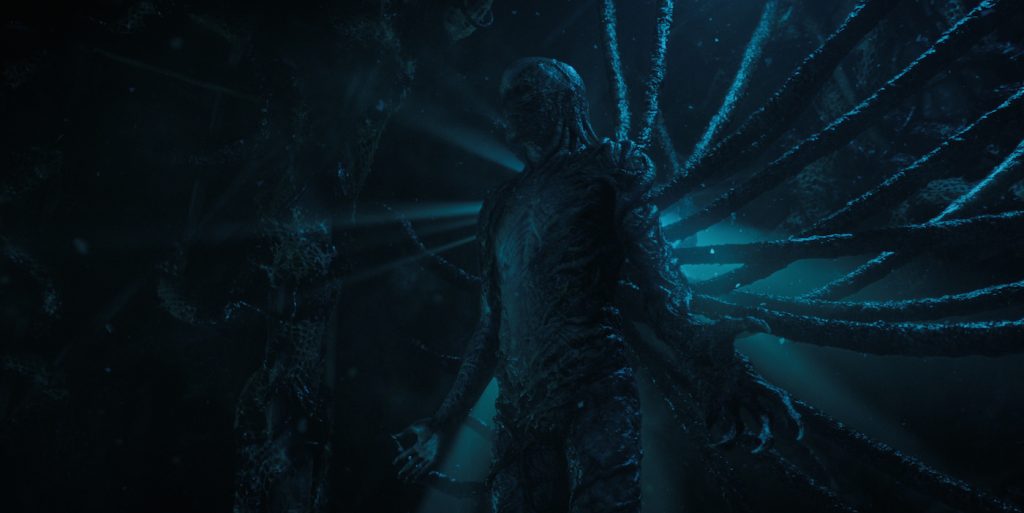
How did you manage the Creel house setting?
There were three versions of the Creel house that had to exist. There was the flashback version from the 1950s where it was pristine. There’s the boarded-up 1986 version the kids break into, and then there’s the Upside Down version. There was actually a house that existed a couple of hours outside of Atlanta where we could shoot on location, but then it also got built on stage so that we could be shooting versions simultaneously and do some of the crazy stuff we needed to do. The art department did an incredible job of rebuilding that house on stage.
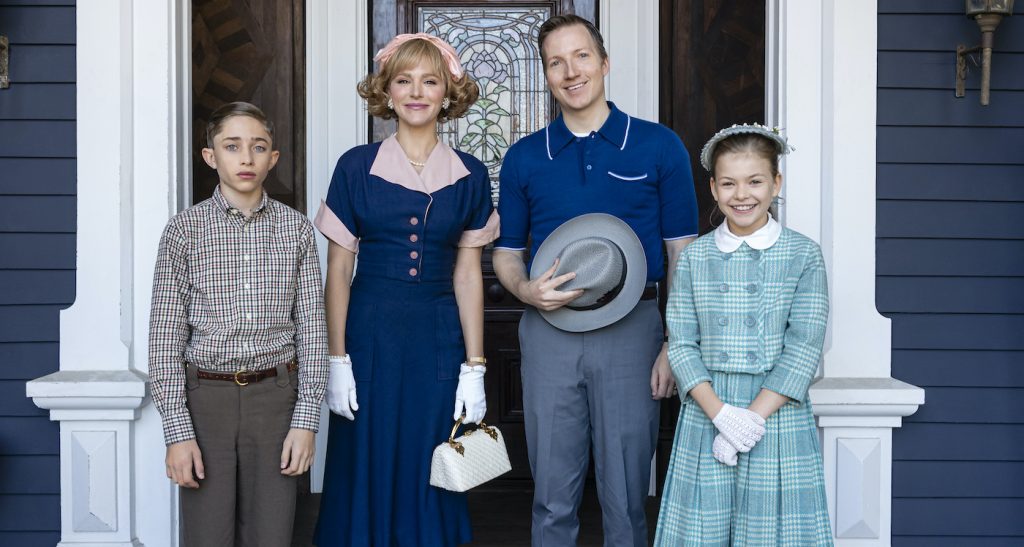
For the 1950s version of the house, what was your approach to getting a period effect?
I don’t think we had to hit it too hard other than wanting to go a little bit more romantic with the lighting and a slightly more colorful grade that leaned into the primaries a bit more. We didn’t want to impose a really heavy treatment on the images, go black and white or anything like that. It didn’t feel necessary because you could just see the dramatic difference of the house and costumes. We had a little bit more of a romantic sense with super soft lighting, a halo effect where we’d have pretty strong backlights with diffusions so it was a little bit glowy at times. But we wanted it to be quite subtle because I think the art direction really does the heavy lifting of setting up that time period.
Do you have any preferred techniques for setting up the 1980s retro vibe the show is so beloved for?
I certainly love having the license to go pretty dramatic with night exteriors and big shafts of unmotivated light — moonlight or street lights — then really being able to go dramatic with the atmosphere, backlight, and wet downs. Often these days you don’t see that quite as much. Things tend to be a little bit more naturalistic. But that’s part of that retro style — the Duffer Brothers specifically said, let’s not be afraid this year to go very blue with the moonlight and go dramatic with it when we feel like it, basically. Then that plays into our hands when we get into the horror stuff because you want it to be a heightened reality that is also at the same time a callback to 80s horror films, but doing that with more modern technology. I love the role that light plays in the Stranger Things journey, both with all the flickering lights that connote a sense of danger or that a superpower is being used, but also going back to Season 1 and the Christmas lights, and how those became Joyce’s way to communicate with Will in the Upside Down. This season builds on that.
Featured image: STRANGER THINGS. Vecna in STRANGER THINGS. Cr. Courtesy of Netflix © 2022



